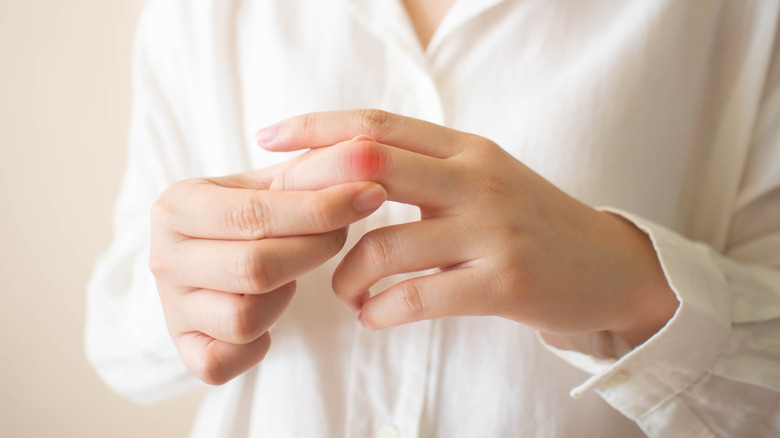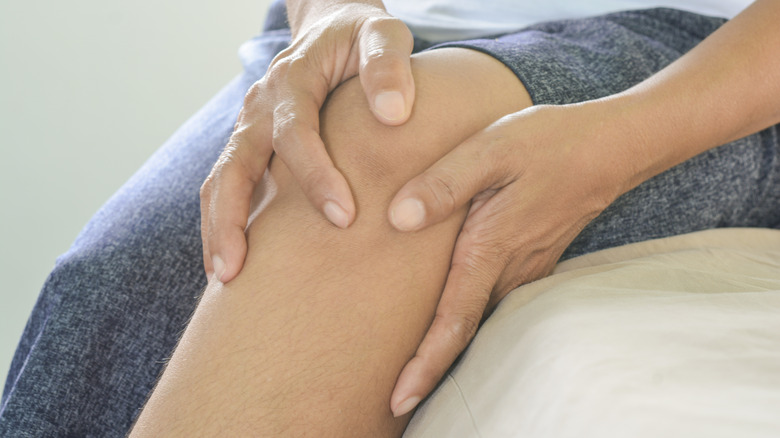What Are The Risk Factors For Osteoarthritis?
Osteoarthritis (OA), the most common form of arthritis, is a painful condition that affects the joints. According to Healthline, with OA, the cartilage around the bones deteriorates and becomes thin, causing the bones connected to it to become rough and uneven. Over time, the cartilage may erode completely, resulting in bone rubbing against bone. This damage causes inflammation and pain, which can be severe. OA generally occurs in the hands, knees, hips, and around the discs of the spine (via Mayo Clinic).
Symptoms of osteoarthritis worsen slowly over time, per Mayo Clinic. While pain is a common indicator, other symptoms include tender joints. Inflammation around the joint might cause swelling, and some joints may not be as flexible as they once were. Joints could feel stiff after waking up or if there is a period of inactivity. Mayo Clinic explains that some patients with OA develop hard lumps, called bone spurs, around the joints. Sometimes, the joint pops or cracks when used.
Age is one of several factors
While it is true that older people are more likely to develop osteoarthritis because of extensive wear and tear on their joints, age is not the only factor that contributes to this disease. For example, an injury to a joint or repeated use over years can cause damage that could increase the risk of developing OA, per the Centers for Disease Control and Prevention (CDC). Being overweight is also a risk factor for osteoarthritis because extra body weight puts additional stress on joints. In addition, the Mayo Clinic states that fat tissue produces proteins that cause inflammation in and around joints. Women over the age of 50 are also more prone to developing osteoarthritis, per the CDC. In addition, if you have family members with the disease, your chances of developing it increase.
There is no cure for osteoarthritis. The CDC explains that a few things work in reducing complications, however. While it seems counterintuitive, increasing physical activity helps. Doctors might recommend physical therapy and muscle strengthening exercises. Low-impact exercises, such as bicycling and walking, are best since they do not put any additional pressure on your joints. Weight loss is also suggested for those with obesity because it will reduce overall stress on joints. Additionally, eating a vegetable-filled and healthy diet may help improve and strengthen your joints, per Healthline.


